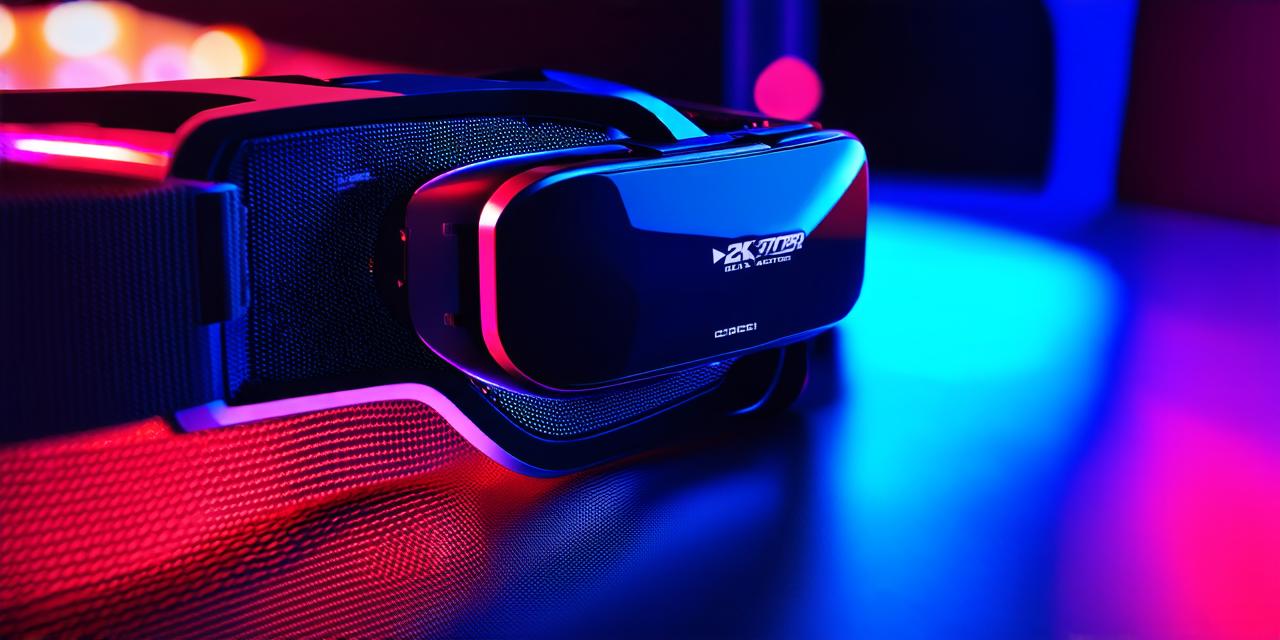Virtual reality (VR) is an immersive computer-generated experience that simulates a three-dimensional environment and allows users to interact with it in real-time. The VR headset, also known as goggles or head-mounted displays (HMDs), is the main component of VR technology.
Function of Virtual Reality Goggles
The primary function of virtual reality goggles is to provide a 360-degree view of a simulated environment, allowing users to experience it as if they were actually there. The goggles use sensors and tracking systems to track the user’s movements and adjust the VR environment accordingly, providing a realistic experience that engages the senses and creates an illusion of presence.
How Virtual Reality Goggles Work
Virtual reality goggles work by projecting stereoscopic images onto two screens, one for each eye. The screens are placed close together, creating an illusion of depth and 3D vision that mimics the way our eyes perceive the world. The goggles also have sensors such as accelerometers and gyroscopes that track the user’s movements and adjust the VR environment accordingly.
Benefits of Virtual Reality Goggles
Virtual reality goggles offer several benefits that make them an attractive option for various applications. Some of these benefits include:
- Enhanced Learning: Virtual reality can provide a safe and controlled environment for students to practice skills and gain new knowledge.
- Improved Training: Virtual reality can be used to train employees in various fields such as manufacturing, construction, and emergency services. By simulating real-life scenarios, VR training can provide a cost-effective and efficient way to improve skills and reduce risk.
- Enhanced Therapy: Virtual reality can be used for therapy purposes, providing patients with a controlled environment to practice exposure therapy or manage pain.
- Entertainment: Virtual reality can provide an immersive and engaging entertainment experience that is not possible with traditional media such as movies or video games.
Case Studies of Virtual Reality Goggles in Action
Virtual reality goggles have been used in various applications to provide immersive experiences and improve outcomes. Here are some examples:
- Medical Training: The University of California San Francisco (UCSF) used virtual reality simulations to train surgeons to perform complex operations on the human body. By simulating surgeries, the surgeons were able to practice their skills in a controlled environment, reducing the risk of complications and improving patient outcomes.
- Military Training: The U.S. Army used virtual reality simulations to train soldiers for combat situations. By simulating real-life scenarios, the soldiers were able to develop critical thinking and decision-making skills that are necessary on the battlefield.
- Tourism Industry: Virtual reality can be used to provide immersive travel experiences that are not possible with traditional media. For example, the VR company “WildernessVR” created a virtual tour of Yellowstone National Park, allowing users to explore the park’s natural wonders from the comfort of their own homes.
- Therapy: Virtual reality can be used for therapy purposes, providing patients with controlled environments to practice exposure therapy or manage pain. For example, the company “Biofeedback Technologies” developed a VR-based treatment program for veterans suffering from PTSD. By exposing patients to virtual environments that simulate combat scenarios, the program helped reduce symptoms and improve quality of life.
FAQs
Virtual reality goggles typically require a computer with sufficient processing power and graphics capabilities, as well as sensors such as accelerometers and gyroscopes to track movement.
2. Can virtual reality goggles be used outdoors?
While virtual reality goggles are designed for indoor use, some models can be used outdoors with the help of external sensors and tracking systems.
3. What is the difference between VR and augmented reality (AR)?
Virtual reality creates a fully immersive environment that blocks the real world from view, while augmented reality overlays virtual objects onto the real world, allowing users to interact with both worlds simultaneously.
4. Are virtual reality goggles safe to use?
Yes, virtual reality goggles are generally safe to use. However, users should follow safety guidelines such as using a stable surface and avoiding sudden movements that could cause injury or motion sickness.
Conclusion
Virtual reality goggles provide an immersive experience that can be used in various fields such as gaming, entertainment, education, training, therapy, and more. By simulating real-life situations, virtual reality can provide a safe and cost-effective way to gain new skills, knowledge, and perspectives. As technology continues to advance, the potential applications for virtual reality will only continue to grow, making it an exciting and promising field for future development.
